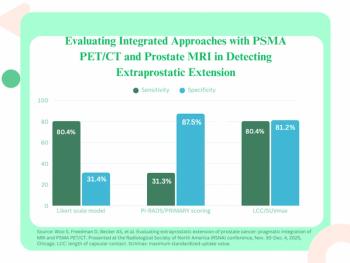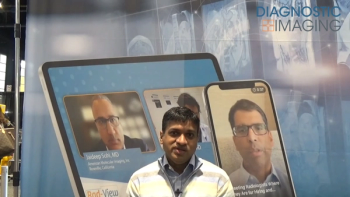
Imaging Shows Brain Changes in High School Football Players
Imaging exams detect structural and functional changes in the brains of high school football players, from RSNA 2016.
Both diffusor kurtosis imaging (DKI) and magnetoencephalographic (MEG) scans may be more sensitive than current conventional imaging in detecting brain changes following head impacts, according to
Researchers from UT Southwestern Medical Center in Dallas, Texas, sought to characterize associations between diffusion tensor imaging (DTI), DKI, and MEG measuring delta waves over a season of high school football in the absence of clinical concussion.
Twenty-four subjects, mean age 16.9, participated in the trial. All played high school football and had no history of concussion. All wore helmets outfitted with the Head Impact Telemetry System (HITS) during all practices and games. Six accelerometers in the helmets measured the magnitude, location, and direction of a hit. All players received pre- and post-season MRI. Whole-brain DTI images were acquired using a 2D single-shot EPI sequence. DTI-derived metrics were calculated using DTI-TK. DKI-derived metrics were computed using the Diffusional Kurtosis Estimator. Eight minutes of eyes-open, resting-state MEG data were acquired pre- and post-season for each subject and brain space delta wave power was computed.
"It's important to understand the potential changes occurring in the brain related to youth contact sports," lead author Elizabeth Moody Davenport, PhD, a postdoctoral researcher at UT Southwestern Medical Center, said in a release. "We know that some professional football players suffer from a serious condition called chronic traumatic encephalopathy, or CTE. We are attempting to find out when and how that process starts, so that we can keep sports a healthy activity for millions of children and adolescents.”
The results showed a statistically significant association between the number of abnormal SKI Tortuosity voxels and abnormally increased MEG delta power voxels. There was also a strong correlation between DTI axonal water fraction (AWF) and MEG delta power.
“We saw changes in these young players' brains on both structural and functional imaging after a single season of football,” Davenport said. "Change in diffusion imaging metrics correlated most to linear acceleration, similar to the impact of a car crash. MEG changes correlated most to rotational impact, similar to a boxer's punch. These results demonstrate that you need both imaging metrics to assess impact exposure because they correlate with very different biomechanical processes."
More study is planned to evaluate the long-term effects of these injuries.[[{"type":"media","view_mode":"media_crop","fid":"54409","attributes":{"alt":"","class":"media-image","id":"media_crop_3467388395292","media_crop_h":"0","media_crop_image_style":"-1","media_crop_instance":"6813","media_crop_rotate":"0","media_crop_scale_h":"0","media_crop_scale_w":"0","media_crop_w":"0","media_crop_x":"0","media_crop_y":"0","title":"Diffusion Tensor Imaging (DTI) of the top part of the brain visible in the top row; Diffusional Kurtosis Imaging (DKI) of the bottom part of the brain visible in the bottom row. ©RSNA, 2016.","typeof":"foaf:Image"}}]]
Newsletter
Stay at the forefront of radiology with the Diagnostic Imaging newsletter, delivering the latest news, clinical insights, and imaging advancements for today’s radiologists.



























